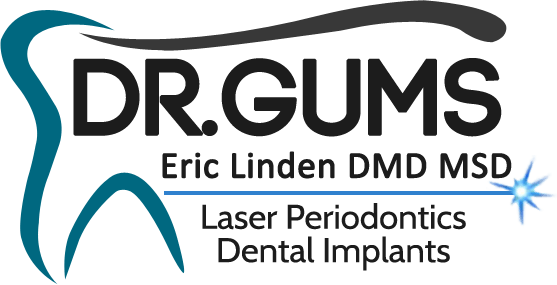Traditionally, gum disease was treated by eliminating the gum pockets by trimming away the infected gum tissue and re-contouring the uneven bone tissue. Although this is still an effective way of treating gum disease, new and more sophisticated procedures are used routinely today.
Guided tissue bone regeneration “regenerates” the previously lost gum and bone tissue. Most techniques utilize membranes, which are inserted over the bone defects. Some of these membranes are bio-absorbable and some require removal. Other regenerative procedures involve the use of bioactive gels.
Bone and gum tissue should fit snugly around your teeth like a turtleneck around your neck.
Your bone and gum tissue should fit snugly around your teeth like a turtleneck around your neck. When you have periodontal disease, this supporting tissue and bone is destroyed and pockets develop. Eventually, if too much bone is lost, the teeth will need to be extracted.
Dr. Linden may recommend a regenerative procedure if the bone supporting your teeth has been destroyed. These procedures can reverse some of the damage by regenerating lost bone and tissue.
During this procedure, Dr. Linden folds back the gum tissue and removes the disease-causing bacteria. Membranes (filters), bone grafts or tissue-stimulating proteins can be used to encourage your body’s natural ability to regenerate bone and tissue.
There are many options to enhance support for your teeth and to restore your bone to a healthy level. Dr. Linden will discuss your best options with you.
What are the benefits of this procedure?
Eliminating existing bacteria and regenerating bone and tissue helps to reduce pocket depth and repair damage caused by the progression of periodontal disease. With a combination of daily oral hygiene and professional maintenance care, you’ll increase the chances of keeping your natural teeth – and decrease the chances of serious health problems associated with periodontal disease.
